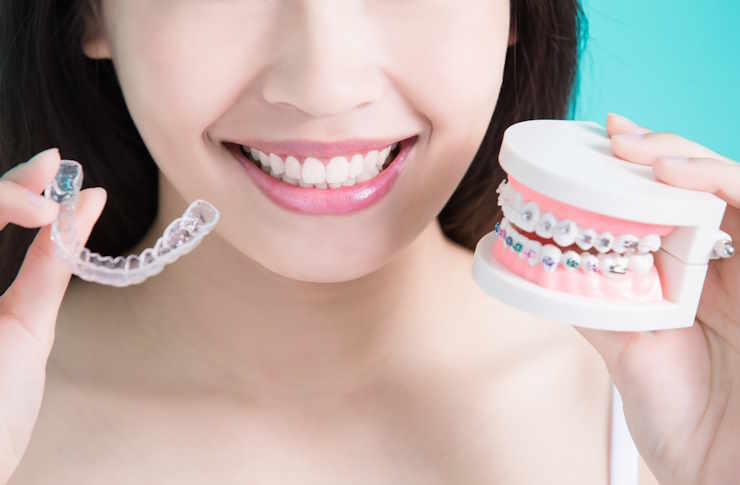Curious About Screwless Dental Implants? Here’s What You Need to Know
Dental implants have revolutionized the field of restorative dentistry, offering a permanent solution for missing teeth. Among the latest innovations in this area are screwless dental implants, which are gaining popularity for their unique design and potential benefits. This article delves into the world of screwless dental implants, exploring how they differ from traditional implants, the process of getting them, and what you can expect in terms of cost.

How Do Screwless Implants Differ From Traditional Implants?
Traditional dental implants typically consist of three components: a titanium screw surgically inserted into the jawbone, an abutment attached to the implant with a screw, and a crown fixed to the abutment. Screwless dental implants, as the name suggests, eliminate the screw that connects the restoration to the abutment, using alternative retention mechanisms instead.
The primary difference lies in the connection method. Screwless systems often use friction-fit connections, magnetic attachments, or specialized locking mechanisms that allow the restoration to snap into place without screws. This design eliminates the access hole typically visible on the crown’s surface of screw-retained implants, creating a more aesthetically pleasing result, particularly for front teeth.
Another significant difference is the distribution of forces. Traditional screw-retained implants concentrate stress around the screw area, potentially leading to component fracture or loosening over time. Screwless systems often distribute occlusal forces more evenly across the implant-abutment interface, which may reduce mechanical complications in some cases.
What Is The Process Of Getting Screwless Dental Implants?
The process of getting screwless dental implants follows many of the same steps as traditional implants but differs in the final restoration phase. The overall procedure typically includes:
-
Initial Consultation and Planning: The dentist evaluates the patient’s oral health, takes X-rays and 3D scans, and determines if the patient is a suitable candidate for screwless implants. This assessment includes checking bone density and volume in the jaw.
-
Surgical Placement: The titanium implant post is surgically inserted into the jawbone, similar to traditional implants. This requires local anesthesia and potentially sedation depending on patient needs and preferences.
-
Osseointegration: Following placement, a healing period of 3-6 months allows the implant to integrate with the surrounding bone tissue through a process called osseointegration. During this time, temporary restorations may be used.
-
Abutment Placement: Once osseointegration is complete, the dentist attaches a specialized abutment designed for screwless connections. This abutment may feature a tapered design, friction-fit surfaces, or locking mechanisms.
-
Final Restoration: The crown or prosthetic tooth is fabricated to precisely fit the abutment using the screwless connection system. When ready, the restoration is simply pressed or clicked into place, eliminating the need for screw access holes and additional sealing materials.
Many patients appreciate that screwless systems often allow for easier removal of the restoration if repairs or adjustments are needed, without damaging the crown or underlying components.
How Much Do Screwless Dental Implants Cost?
The cost of screwless dental implants typically exceeds that of traditional implants due to the specialized components and potentially more complex technical requirements. Several factors influence the final price:
-
Geographic location - Prices vary significantly between regions and urban versus rural settings
-
Dentist expertise - Specialists with advanced training in implantology often charge premium rates
-
Materials used - Premium implant systems from recognized manufacturers generally cost more
-
Additional procedures - Bone grafting or sinus lifts, if required, add to the overall expense
-
Number of implants - Multiple implants increase the total cost proportionally
| Implant Type | Average Cost Range (Single Tooth) | Notable Features |
|---|---|---|
| Traditional Screw-Retained | $3,000 - $4,500 | Well-established technology, widely available |
| Screwless System | $3,500 - $6,000 | Better aesthetics, potentially easier maintenance |
| All-on-4/6 Screwless Systems | $20,000 - $30,000 per arch | Full-arch restoration, fewer implants needed |
Prices, rates, or cost estimates mentioned in this article are based on the latest available information but may change over time. Independent research is advised before making financial decisions.
Insurance coverage for screwless dental implants varies widely. Many dental insurance plans categorize implants as cosmetic and may only cover a portion of the procedure, if at all. Some plans might cover the crown portion but not the implant itself. Patients should verify coverage details with their insurance provider before proceeding with treatment.
Many dental practices offer financing options to make screwless implants more accessible, including payment plans, healthcare credit services, and dental discount plans. Some patients may also benefit from seeking treatment at dental schools, where supervised students perform procedures at reduced rates.
Advantages and Limitations of Screwless Dental Implants
Screwless dental implants offer several advantages over traditional screw-retained systems. The absence of screw access holes improves aesthetics, particularly for visible front teeth. The design typically allows for easier removal when maintenance is required, and some studies suggest improved force distribution that may reduce complications like screw loosening or crown fracture.
However, these systems are not without limitations. The specialized components often result in higher costs compared to conventional implants. Not all dental providers have extensive experience with screwless systems, potentially limiting availability. In some clinical situations, particularly where space is limited or unusual angles are involved, traditional screw-retained implants may still be the preferred option.
Patient-specific factors like bone quality, oral hygiene practices, smoking status, and presence of conditions like bruxism (teeth grinding) can influence which implant system is most appropriate. A thorough consultation with an experienced implant dentist remains essential to determine the best approach for each individual.
This article is for informational purposes only and should not be considered medical advice. Please consult a qualified healthcare professional for personalized guidance and treatment.




